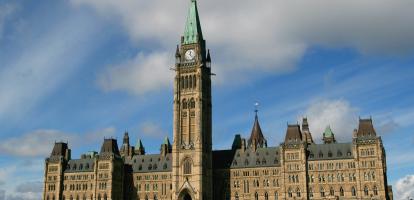The recent terrible B.C. floods have confirmed how unprepared we are for climate change and severe weather events. The extensive damage in British Columbia has been in the spotlight; a similar event in another province would have many of the same disastrous consequences. The federal and B.C. governments announced this week they will spend $228-million to help affected farmers and their communities return to normal production activity.
What can be done to help protect the value of physical assets from climate risk – specifically housing and commercial buildings? More universal access to flood insurance is the most obvious risk-management tool, along with significant investment in public infrastructure to build resilience. However, overland flood coverage has been available for less than a decade and only a few Canadian property and casualty (P&C) insurers currently offer it.
Moreover, up to 10 per cent of Canadians live in high-risk flood zones. For them, flood insurance coverage is generally not available. For insurers, the likelihood of more extreme-precipitation events only heightens the challenge of providing flood insurance coverage. In B.C., insured flood claims have already been estimated at $540-million; the extent of damage to uninsured properties is bound to be significant.
What are the public policy options? Governments have a choice between continuing to react after the fact or developing a plan to help property owners manage flood risk. The Insurance Bureau of Canada represents the P&C insurance industry and has been a prominent voice promoting a more activist strategy. It has proposed five key measures to manage flood risk: better public education; move people out of harm’s way; cease building on (expanding) floodplains; invest in flood defences; and provide all with access to flood insurance.
Absent an active strategy to expand insurance coverage in high-risk areas, governments and taxpayers are the de facto backstop for uninsured properties. Bailout funding is used to repair affected homes and commercial structures, as well as for expropriation of high-risk properties on flood plains to avoid the need for future flood damage and bailouts. The annual liabilities of the federal Disaster Financial Assistance Arrangements (DFAA) increased from $100-million annually prior to 2000, to nearly $500-million in 2009-10, to $2-billion in 2013-14. The last publicly available estimate from the Parliamentary Budget Officer (in 2016) projected annual flood liabilities for governments at nearly $700-million annually.
Shifting from a passive to an active flood-management strategy could help to improve fiscal planning, manage these costs and promote resilience and risk avoidance. After years of discussion, a task force was finally created in November, 2020, to address developing an active strategy. The Task Force on Flood Insurance and Relocation includes representatives from the federal, provincial and territorial governments and the insurance industry. It is examining options for flood insurance for residents in high-risk areas, as well as options for potential relocation.
What are the active risk-management options? They include:
- Premium assistance for high-risk properties. The property insurance industry would be expected to underwrite flood risk for the vast majority of individual properties, setting market-based premiums. Governments would subsidize a portion of the premium for high-risk properties, since very high annual premiums (e.g. $10,000 or more) would be likely. Detailed criteria would be needed to determine who qualifies for the premium assistance.
- Income support for owners of high-risk properties to buy insurance coverage. Qualifying owners could receive income support, rather than subsidized premiums, to help them secure insurance coverage. This approach would avoid direct government intervention in the property insurance market. It could also be subject to a means test.
- In addition, a flood reinsurance pool created by industry, government or some combination, would separate high-risk properties from other properties covered by flood insurance and by spreading the risk to reinsurers provide an extra layer of focused risk management. Governments could create the pool or could commit to backstop excessive losses by a private-sector flood reinsurance pool beyond its financial capacities.
Both a premium subsidy and an income-support program would need to be funded by federal and provincial government budgets, reallocating funds already covering the cost of disaster relief. Any program should reflect factors such as property value, owner income levels, projected flood risk, deductibles, limits of coverage etc. Furthermore, certain areas could be red zoned for expropriation (or no resale), based on updated flood risk mapping and experience. New construction in high-risk areas could also be prohibited or excluded from coverage.
Reacting to crises after the fact is seldom the best approach to public policy. Getting ahead of the climate-change curve means implementing an array of policies to mitigate its impact and promoting adaptation to the new reality. We would advise a comprehensive approach that combines income support or premium subsidies to buy insurance coverage for high-risk properties, creating a public-private reinsurance pool, selective expropriation, and prohibiting new construction in areas at high risk of flooding. The formation of the public-private task force suggests governments are finally taking flood-risk management seriously. The task force is expected to report in spring 2022 – late, but better late than not at all.
Glen Hodgson is a Fellow-in-Residence at the C.D. Howe Institute.





